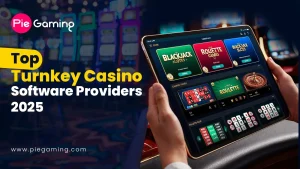The History and Evolution of Bingo Callers and Lingo

Picture this: a smoky hall in the 1920s, the hum of anticipation, and a charismatic figure at the front calling out numbers with a flourish. Bingo callers—and their unique lingo—have been the heartbeat of the game for nearly a century. But how did these traditions start? And why do we still shout “two fat ladies” for 88? Let’s dive in.
The Origins of Bingo Callers
Bingo’s roots trace back to 16th-century Italy, but the modern caller? That’s a 20th-century invention. When bingo exploded in popularity at carnivals and church halls in the 1920s and ’30s, callers became essential. They weren’t just announcing numbers—they were entertainers, keeping the energy high and the crowd engaged.
Early callers often had backgrounds in theater or vaudeville. Their job? Make sure players heard the numbers (no small feat in a noisy room) and remembered them. Hence, the birth of rhyming slang and visual metaphors.
Why the Lingo? A Stroke of Genius
Imagine trying to distinguish “15” from “50” in a packed hall. The solution? Creative nicknames. These weren’t random—they were mnemonic devices, designed to stick. For example:
- “Legs 11”: The number 11 resembles a pair of legs.
- “Two little ducks” (22): The shape looks like ducks swimming.
- “Dancing queen” (17): A nod to the ABBA song, added later.
Some phrases even reflected societal quirks. “Two fat ladies” (88) played on the curvy figure of the number, while “knock at the door” (4) mimicked the sound of rapping. It was practical, playful, and—honestly—a bit cheeky.
The Golden Age of Bingo Callers
Post-World War II, bingo halls boomed. Callers became local celebrities, known for their wit and charm. They’d riff on current events, tease regulars, and even improvise rhymes. No two callers were alike—some favored rapid-fire delivery, others leaned into dramatic pauses.
Here’s the deal: the best callers turned a simple game into a social experience. They weren’t just voices; they were conductors of chaos, laughter, and camaraderie.
Modern Bingo Callers: Tradition Meets Tech
Today, digital bingo has changed the game. Auto-daubing, online rooms, and electronic displays mean callers aren’t always necessary. But in traditional halls? They’re still thriving—just with a few updates.
Modern callers often blend classic lingo with pop-culture references. Think “Taylor’s age” for 22 (thanks to Swift’s hit song) or “Avengers assemble” for 6 (the original team’s number). The lingo evolves, but the spirit stays the same.
Regional Variations: A Quirky Twist
Travel across the UK, and you’ll hear dialects in bingo calls too. In Scotland, 3 might be “cup of tea” (rhyming with “tree”), while in London, it’s “cup of tea” for… well, 3. Confusing? Sure. But that’s part of the charm.
The Future of Bingo Calls
Will AI replace callers? Unlikely. The human touch—the banter, the mistakes, the spontaneity—is irreplaceable. That said, younger players might not know “Buckley’s chance” (a very old term for 87), so some phrases could fade.
But here’s the thing: bingo lingo is more than nostalgia. It’s a living language, shaped by each generation. And as long as people play, the callers—and their quirky codes—will adapt.
Classic vs. Modern Bingo Calls: A Quick Comparison
| Number | Classic Call | Modern Twist |
|---|---|---|
| 7 | Lucky | James Bond (007) |
| 10 | Boris’s den | Perfect 10 |
| 69 | Either way up | Nice… (internet meme) |
So next time you hear “all the threes” or “unlucky for some,” remember—you’re part of a tradition that’s equal parts history, humor, and a little bit of magic.







